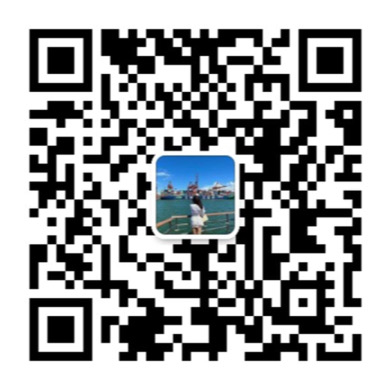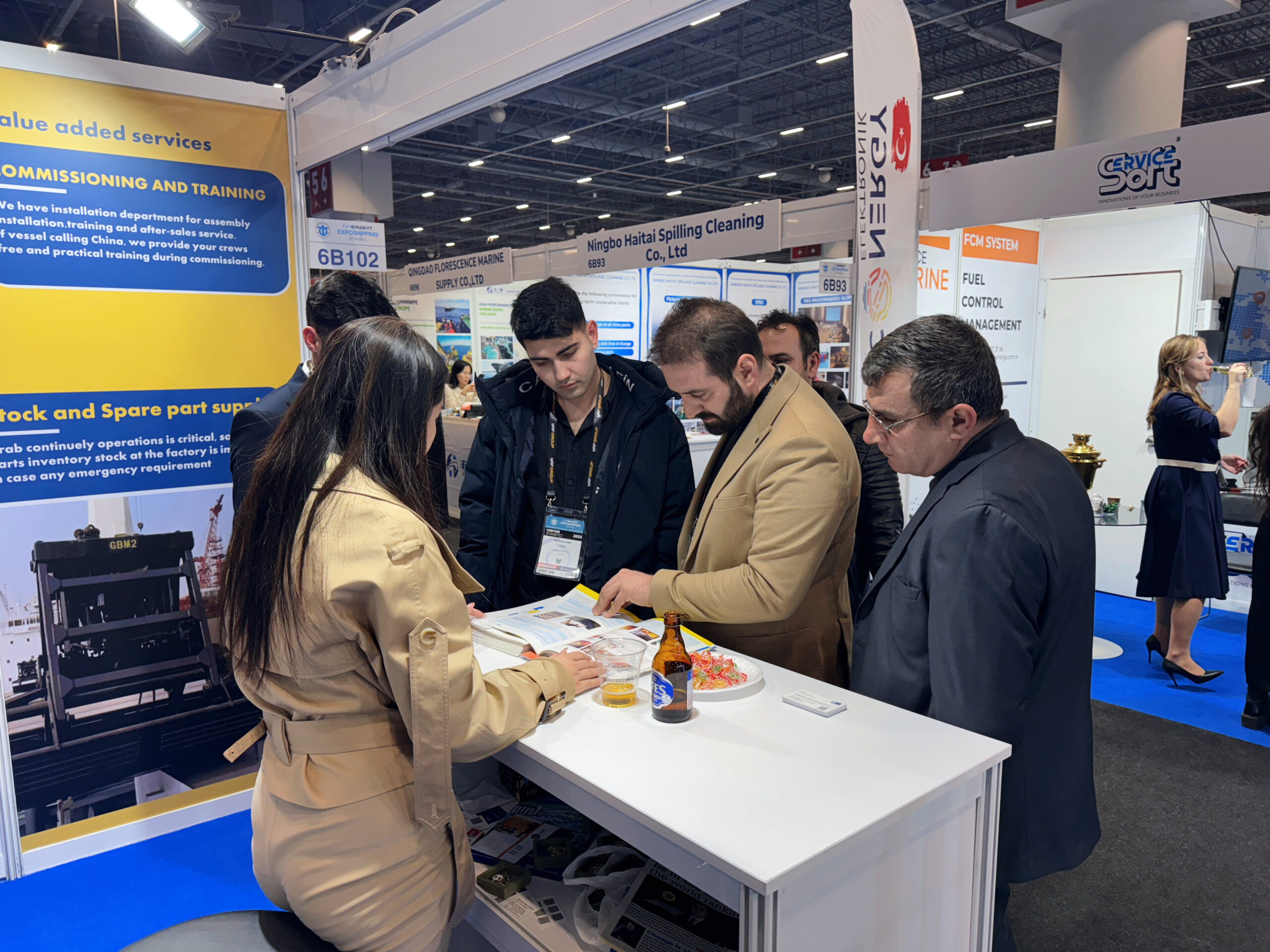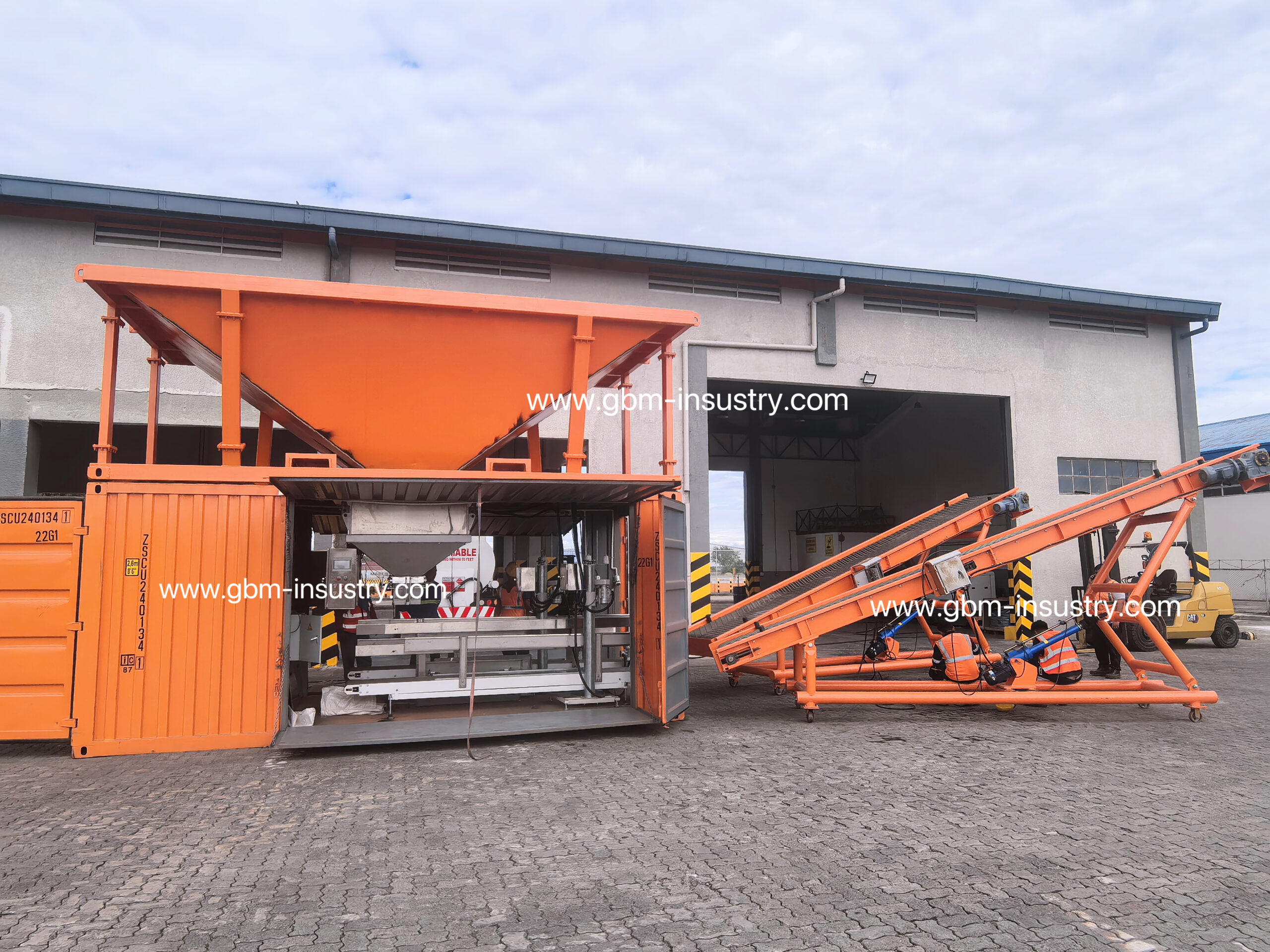Introduction
Due to operational errors or other factors, hazardous situations may arise where the container truck starts moving before the container is fully unlocked during unloading or before the container is fully locked after engaging the container during loading. This can result in the spreader and its attachments being dragged, damage to the STS crane control room and the container truck, and injuries to STS crane operators and container truck drivers, severely compromising terminal safety and operational efficiency.
To prevent such incidents, an intelligent system has been designed to implement physical locking of the container truck when interaction between the lifting device and the container truck is incomplete—specifically, before the lifting device has fully disengaged from the container or the container truck. This ensures that even if personnel operate incorrectly, the container truck cannot move, eliminating the safety hazard of the STS crane lifting device being dragged.
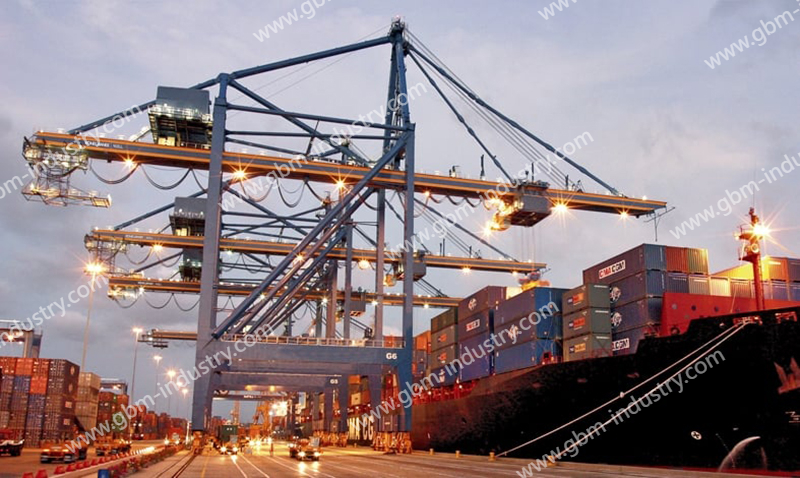
Objectives and Approach
Objectives
To achieve intrinsic safety in operational workflows, this study develops a physical security-based anti-towing automatic parking system for container terminal loading/unloading operations. By eliminating human error as a safety risk, it ensures secure handling processes.
Design Approach
Adopt a “standalone platform + networked interconnection” technical solution. Standalone platform: Each container truck and each STS crane operates as an independent platform. Networked interconnection: Any container truck and any STS crane are interconnected via a network, enabling cross-coordination. Data such as sudden changes in container truck pallet weight, STS crane lifting position, trolley position, and container engagement signals are collected. Through the computing unit installed on the container truck and the wireless transmitter on the STS crane, this information is transmitted to the PLC installed on the container truck. The PLC outputs control signals to lock the clutch pedal in the driver’s cab, thereby achieving automatic control of container truck operation.
The ‘standalone platform + networked interconnection’ approach offers distinct advantages. Each networked system is based on four signals: STS crane lifting height, trolley position, hook safety pin signal, and pallet weight change. maximizing effective interconnection while minimizing the probability of “false connections.” This achieves the goal of dynamically interconnecting all STS cranes and all container trucks at the lowest cost and highest efficiency, representing a leading solution for preventing container truck dragging in traditional container terminal STS crane operations.
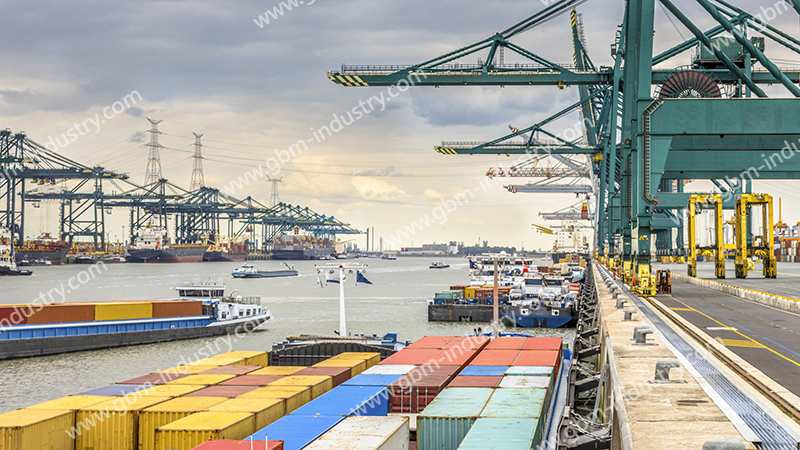
Technical Solution
The intelligent anti-collision system for container STS cranes addresses safety issues in crane-container truck interactions. It primarily comprises two components: STS crane control modifications and container truck control. By collecting four key pieces of information—real-time crane lifting mechanism position, real-time trolley mechanism position, hook engagement signal (safety pin signal), and sudden changes in container truck pallet weight—the system initiates container truck clutch control when all predefined conditions are met, thereby locking the container truck.
Container Truck STS Crane End Design
Lifting Height Setting
The absolute height of the container pallet above ground is approximately 1.5m, while the absolute height of the container is approximately 2.6m. Therefore, when the lifting height set within the gantry crane control program is below 6m (a negative value when below the terminal reference level), the condition is considered satisfied.
Trolley Position Setting
This system is designed for operation at shore-based STS crane terminals. The crane’s position is considered within the effective range when it enters the landward area of the terminal. Considering the overlap between the effective working lane of the STS crane and the terminal’s landward boundary, as well as the overlap in the crane’s landward/seaward identification positions, the STS crane control program sets the condition that the crane’s position must be less than -2m for the requirements to be met.
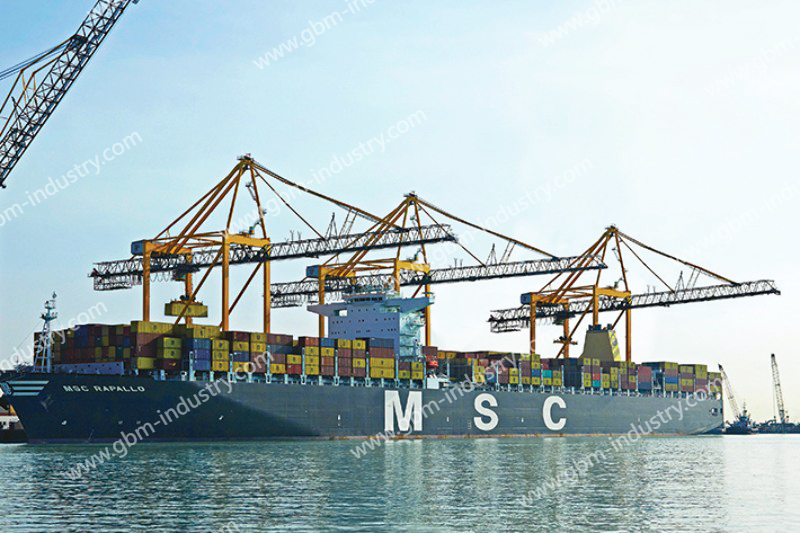
Top Pin Signal Setting
The initiation and conclusion of the interaction process between the lifting device (load container) and the container truck are indicated by the appearance and disappearance of the safety pin signal, respectively. Changes in the safety pin signal signify changes in the interaction process; therefore, the presence of the safety pin signal indicates that the interaction process is in progress.
Wireless Transmitter Base Station Design
The wireless base station frequency band is distinct from the port operation wireless communication band, preventing mutual interference and erroneous transmission. The base station transmission power is designed with a coverage radius of 100m, which not only meets the maximum operational radius requirement for a single STS crane (i.e., the track gauge of 35m) but also minimizes the ineffective coverage radius to reduce the probability of erroneous connections.
Container Truck-Side Design
Weighing Unit
Upon detecting such a change, the system performs logical operations with three signals from the STS crane. When all four signals meet the preset conditions, it determines that the crane’s hook is interacting with the current container truck and initiates the container truck locking procedure. The weight change signal serves as the system’s activation condition, while the other three signals fulfill the preset filtering criteria.
The weight change is the key to precisely identifying the “unique” interaction moment—the instant when a STS crane’s hook is fully engaged with or disengaging from a container truck with high probability. When a weight change occurs, the PLC control logic activates, locking the container truck.
The weighing unit consists of patch sensors mounted beneath the container truck’s load-bearing beam. These sensors detect weight changes by measuring beam deformation, offering simple installation, high reliability, and maintenance-free operation.
Wireless Receiving Base Station
The container truck-side wireless receiving base station collects signals transmitted from the STS crane’s transmitting base station, including lifting height, trolley position, and safety pin signals. These signals are converted by the receiving base station into high-level outputs to the container truck-side PLC peripheral relays, serving as one of the conditions for activating the clutch controller within the control program.
Anti-Drag System PLC
The PLC primarily collects weight change information and level signals from the wireless receiver module. When a weight change of 10 tons is detected (typically occurring during container placement when the combined weight of the lifting device and upper frame exceeds 14 tons), a 5-second condition check begins. If, during this detection window, the wireless receiver module signals for lifting height, trolley position, and safety pin all meet the system activation conditions, the PLC outputs a high-level signal. This signal activates the clutch controller via the peripheral relay, locking the container truck.
Clutch Controller
The clutch controller is installed in the container truck driver’s cabin. It is driven by a low-power DC motor, activated by the high-level signal output from the anti-tow system PLC. When the motor operates, it tightens the steel cable fixed to the rear end of the clutch pedal, forcibly depressing the clutch pedal and preventing the container truck from moving.
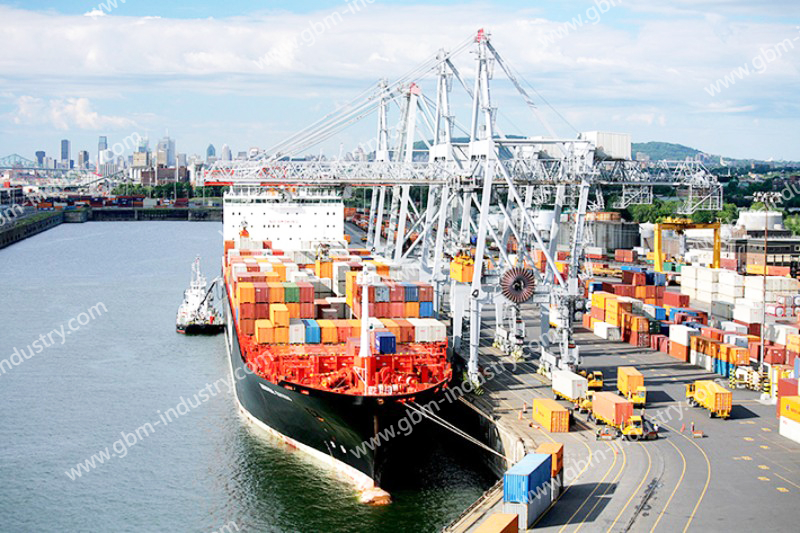
System Features
Series Signal Design
The system employs a series signal activation design. Only when all four signals are simultaneously satisfied can the controller be activated to lock the container truck. Otherwise, the container truck operates normally. These four signals represent all conditions required for the interaction process. The series design ensures precise identification of the interaction while preventing false activation during normal container truck operation.
Multi-Signal Recognition Design
The control system incorporates four data inputs: hoist, trolley, safety pin, and weight fluctuation. This increases the number of required conditions, significantly reducing the probability of two or more STS cranes simultaneously meeting all criteria. This high-probability multi-condition recognition ensures uniqueness, preventing false actions between equipment or systems.
Wireless Transmission Design
The wireless transmission coverage radius is designed for an effective range of 50–100 meters. This radius reliably ensures signal transmission while minimizing coverage to prevent false actions in non-operational zones, significantly enhancing system reliability.
Single-Unit Networking Design
Instead of establishing a large-scale IoT network, the system employs single-device identification. This approach guarantees deployment with minimal investment costs and maximum construction efficiency. The tested network system achieved 350,000 TEU container handling volume without any reported safety incidents.
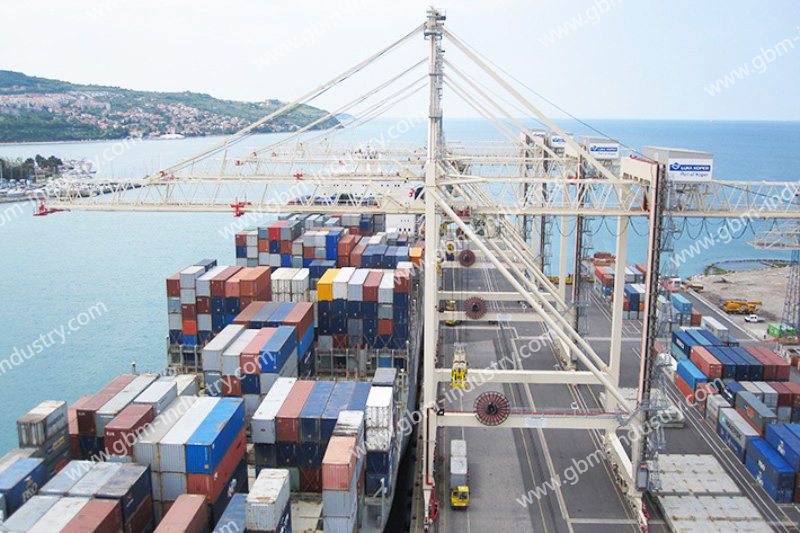
GBM offer various spare parts for STS crane
GBM specializes in port equipment, committed to becoming the most trusted STS spare parts solution provider for global port customers. We focus on supplying a full range of high-performance replacement parts for major brand STS cranes, ensuring your critical equipment remains in optimal condition at all times. This maximizes equipment lifecycle extension while safeguarding port operation continuity and economic efficiency.
Our core strengths lie in deep technical expertise regarding STS crane equipment and comprehensive product coverage. Addressing the complex, high-load operational demands of STS cranes, GBM supplies numerous critical components including, but not limited to, spreader headblocks, various sheaves, and trolley assemblies. Whether for hoisting mechanisms, trolley travel systems, or spreader systems, you can find nearly all required spare parts at GBM. We understand that every component, no matter how small, impacts overall safety. Therefore, our product line is meticulously designed and planned to achieve high compatibility and seamless replacement with original equipment.
Conclusion
The losses from STS crane dragging incidents are substantial. Besides economic losses from machinery damage alone, while cargo damage and casualties result in even more severe consequences. This system fundamentally prevents STS crane dragging accidents. As the first physical security control system in traditional container terminals to achieve automatic container truck locking, it significantly enhances the efficiency and safety of terminal loading and unloading operations, demonstrating considerable value for widespread application.
If you are looking for reliable STS Spare part supplier,please dont hestate to contact with us:sales.export@gbm-china.com
